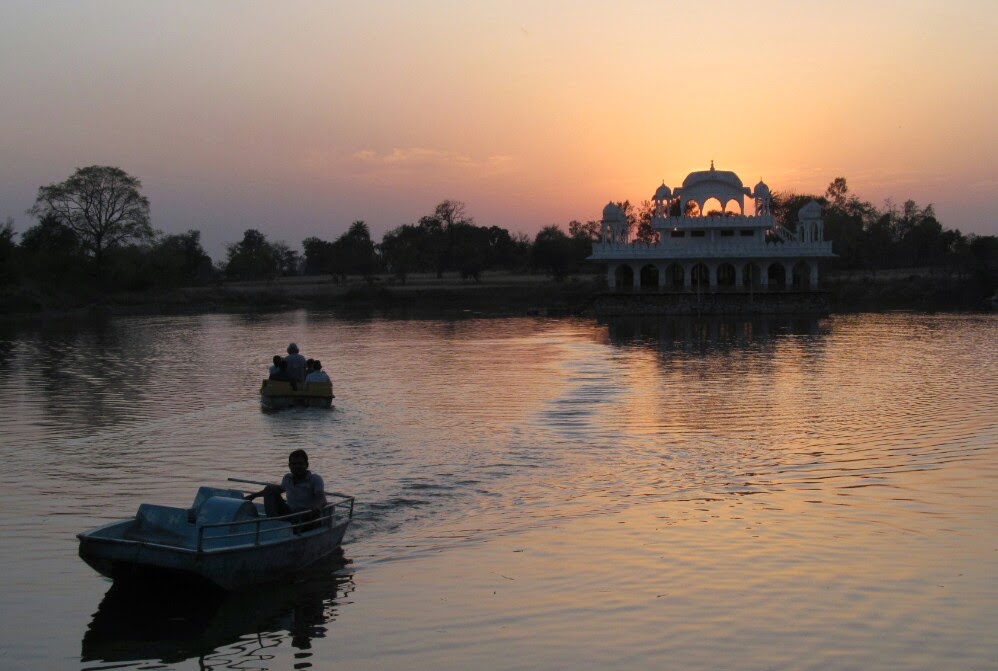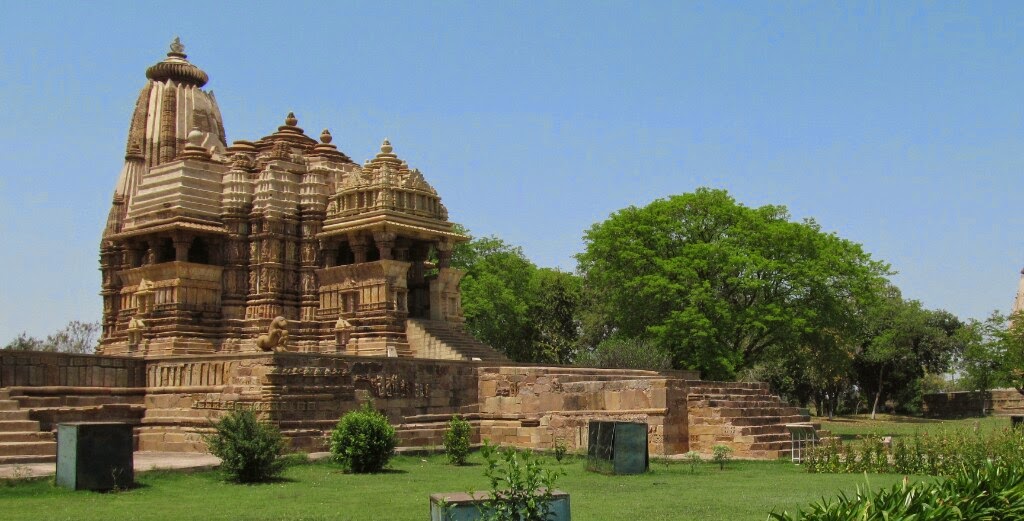It was time for a little bit of royal luxury in our lives but we were surprised at the extremes we were in for when we decided as a group to stay at the Hammeer Garhi Heritage Resort. A mini fortress, it was built over 350 years ago and surrounded by a settlement now called Basari. The resort was fabulous: 4 poster beds, private balconies, lush dining room and halls, chandeliers, courtyard garden. Everything you would expect, it even had a lake behind it with a small palace in the middle that you can boat to for chai tea while watching the sunset.
 |
| Water by hand pump |
In stark contrast the tiny village of Basari was a step into a past of mud brick houses and thatched roofs, with people living mostly as they would have hundreds of years ago. Water was obtained either from large open wells using a bucket or by hand pump. The caste system here is well entrenched with different living areas for the different castes with correspondingly different quality housing and water supply. There were few modern conveniences in evidence, but some children told me about the brands of computers they have.
 |
Bishal demonstrating the difference between a
dried out cow pat and a fresh one. |
We had a brilliant afternoon wandering around this village and trying to get to know about their way of life. The village was surprisingly clean (compared to most of India), and there were many cow pats drying in corners everywhere. A very renewable resource, cow poo is used for many purposes including as paint on the walls, small fires for repelling mosquitoes and as a fuel. Temperatures here can reach the high 40's so the walls and doors of many houses are very thick and without windows. Houses mostly consist of just one or two rooms with no aircon or fans.

 |
|
The people were very friendly and as curious about us as we were about them, especially the children, who came running from all directions and basically mobbed Elizabeth. Next thing I know she is riding a bike and wielding a cricket bat. (This was the day after India thrashed Australia so I think they were saying even a girl can play better cricket than the Australian cricket team.) Being teachers we asked them lots of questions about their ages and their schooling, and finished up playing a very shonky game of cricket that the children seemed to be taking way too seriously... We ate a sumptuous Indian dinner and danced the night away.
 |
| Umm are you guys supposed to be on the roof? |
 |
| Dancing at the resort |
 |
Feel free to click on and
zoom in...
|
The next morning we reluctantly left for our trip to Varanasi and the river Ganges. On the way we stopped at Khajuraho, famous for its Hindu and Jain temples that are over 1,000 years old and covered in carvings depicting scenes from ordinary life. About 10 per cent of the carvings are of a very sexual nature so there is a huge focus here on Kama Sutra and Tantric paraphernalia and souvenirs. The temples themselves are amazing to look at and the carvings intricate and well done. We had a very funny tour guide who had a dry sense of humour and seemed unembarrassable (unlike most of us). After a very busy day we boarded a train for our overnight journey to Varanasi.

Our last stop in India, the city of Varanasi was a prime (if not the best) example of the frenetic way of life we had come to expect in most of India: insane traffic, numerous lumbering cows, never ending heat and dust and noise. One of the holiest and oldest continuously inhabited cities in India, death here is supposed to bring salvation. But if we thought the city was an assault on the senses the river Ganges declared war on them.
 |
|
 |
|
The Ganges is India's most sacred river. The Indians bathe in it, wash their clothes and animals in it, drink from it, pray along it and scatter their ashes in it. Not sure if drinking and bathing is a good idea when according to Wikipedia it is the fifth most polluted river in the world. We went for a wander along the shoreline watching the throngs of people carry on their daily lives. We came upon a small funeral pyre at a traditional cremation site (there are different sites for different castes). Three wrapped bodies were being brought down to the site to await their turn at instant salvation.

 |
|
Towards sunset we boarded a small wooden boat, one of hundreds all clustered together. Our oarsman lost his oar and bounded across several boats to retrieve it. I videoed it so will post it below if internet allows :-) The trip up river left most of us speechless. As we approached one of the main cremation sites where several funeral pyres were at different stages of completion the smell, the smoke and the realisation of what was happening was something none of us had ever encountered before. We watched as a shrouded body was brought down and prepared for burning. As the sun fell an eerie quiet twilight descended on us punctuated by the flames from the receding fires and tempered by the billowing smoke. Just writing about it brings back memories that make me melancholy again. This goes on 24/7.

 |
|
Our boat reclustered with the others as we approached the shore, and we watched one of the religious ceremonies that occur at several points along the river every night. Just before the ceremonies ended our driver manouvered our boat around several others in the queue. He then directed us on to another boat as a stepping stone to reach the shore and join the massive crowds escaping these overpowering scenes before the rush.
Despite our boat driver's helpful queue jumping it took us an hour to walk back to our hotel as all rickshaws both human and motor powered were already taken. We felt decidedly punch drunk as we dodged cows, cars, bikes, dogs and other people on narrow noisy streets full of fumes and blaring horns. By the time we arrived 'home' we were praying for a different kind of salvation, the anticipated salvation of neighbouring Nepal.
 |
I love all the random animal scenes you
come across in India |
 |
| The river Ganges |
Video of boat driver fetching oar























No comments:
Post a Comment